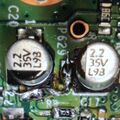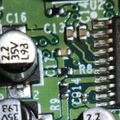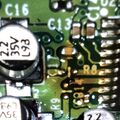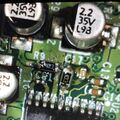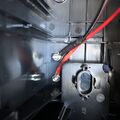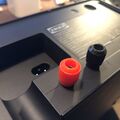Symfonos Mini
| Project Symfonos Amp Mini | |
|---|---|
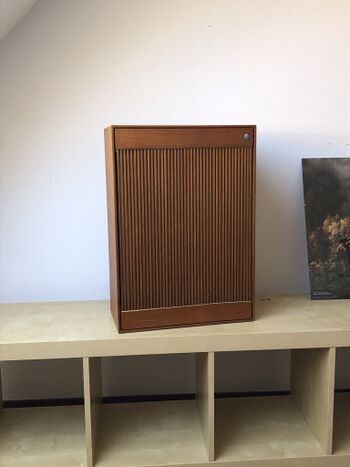
| |
| Converting a vintage speaker box to Sonos through Ikea hacking and 3d printing | |
| Status | Completed |
| Contact | Sebastius |
| Last Update | 2021-05-12 |
Through a bit of Covid boredom i overbid at a BVA auction on a pair of vintage speaker cabinets. They looked awesome but i kinda spent more than i probably should have. I'm a bit of a sucker for vintage electronics, and i wanted to do something with creating a retro-vibe theme for some of my music listening in the house. It's a pair of Sinus 1035 speakers from roughly 1968. A three-way speaker setup with two mid- and two high- drivers in each cabinet. And an awesome vintage look!
-
One of two, fresh from the pickup.
-
You won't find spec-sheets on the back of modern speakers! So much information!
-
Lovely little logo
After connecting them to an amplifier i kinda liked the sound (yay!) but also noticed various differences in volume and quality between the two (boo!). Time to (carefully) take these chunky blocks of woodgrain apart.
-
Okay, looks a bit worn but okay
-
Ah so thats why this unit sounded louder: new mid-range driver!
-
Jup, dead spiders (and dried spider eggs elsewhere!)
-
Tear it down
-
Wait... is that some sort of caulk?
Well these cabinets had lived a few lives it seems. Dead bugs and many sings of hacks and badly done repairs. Half of the mid- and high-range drivers were disconnected (because they were broken anyway i guess), instead of using proper connectors or solder a few drivers were connected through a bit of twisted wire, which caused intermittent sound and to seal the drivers to the cabinet a gloopy form of caulk was used at some point. All in all 2 mid-range drivers and 2 high-range drivers were broken beyond repair. The remaining units are very old, the foam in the midranges is a very brittle sponge now.
But when combining the working drivers into a single unit, together with the original filter, it all works! It doesn't sound incredible, but it sounds nice enough for me to enjoy some music. It's time for part two of this story!
Upgrades!
Audiophiles will probably start screaming at their screen right now. Guess what: i like music, i don't like the hassle. So recently i got most of my house on the Sonos ecosystem. The mainstay is the Ikea Symfonisk bookshelf speaker, an affordable point of entry into the Sonos ecosystem. It has wifi, it runs various music services and, important for me, it synchronizes across different speakers. They have a nifty feature called Trueplay to tune the speaker a bit to your listening conditions. Note: i've not gotten that feature working, and not for the lack of trying. It's a bit too sensitive for my house i guess.
Turns out the Symfonisk speaker is very often used in various hacks. It's versatile and affordable, so if you break one it doesn't hurt too bad. There are other ways this speaker can hurt badly, i'll get to that.
The three main things people do with these things is either build the PCB into another 2way speaker cabinet with better drivers as a nice upgrade, some hacked a mediocre sounding line-out out of it and the option i found most appealing: make the PCB s 100watt mono full range amplifier. I took this route because my speaker is a three-way system, so there is a proper filter already in there. Originally i just connected the woofer output to the woofer and the high output to the mids and highs.
I found a guide here: https://www.thetylergibson.com/ikea-symfonisk-amp-modification-guide/ and got to work. All the steps will be repeated here, with my own interpretation added.
WARNING: I told you, this speaker can bite. There is a giant 280V capacitor on the DC side of the power supply. It does not automatically discharge. It hurts. A lot. Please discharge this cap safely before your regular hackery and confirm it with a multimeter. Do NOT short circuit this cap, you will weld your probes, cause burns or nasty sparks. Stay safe, the world outside is dangerous enough.
-
the bridge between the two capacitors
This is the first mod you should do. A bit of wire connects the two caps that are between the DAC and the amplifier to make this a combined low+high signal.
In TylerGibson's guide there is also the tip to replace the two 470 Ohm resistors (not 47 Ohm as TG states). I tried it and the recommended 10k made the volume way to low in my case. I then tried 4k7 and after that i gave up and went back to 470. I didn't have the correct size of resistors in house (i think it's 0402), so i used 0805 giants. But honestly: i suggest you skip this part of the mod.
-
the originals
-
rm -rf resistor.*
-
scraped the traces clean to have a bit more room to solder my giant resistors
-
And here they now sit. Big.
The third bit of hackery is setting the amplifier chip to a different mode. We're going to make a 2x 25W amp into a 1x 100W amp. That's not a bad deal at all!
-
I just bridged the pins and cut the traces. Way easier than lifting pins etc.
The final bit needed for this mod is changing the wiring loom. The Red+Black combine into the positive terminal of the amplifier output, the Blue+White combine into the negative. I used a pair of Wago 221-413 splicing connectors to hook it up.
When this was all done i hooked up the amplifier board to my speakers and lo and behold: succes! Nice sound and it plays all my music!
Pleasantries
I like my hacks to look nice. For a while i hesitated between putting the board inside the big speaker case and having it out on the back of it. The decision was made to have it outside, in the original box. Mainly because i didn't want to add a potential fire source to the inside of a very dry wooden box with plenty of kindling inside (the damping material is extremely dry and brittle). I actually designed a 3d printable box (and found another online) before i reached the conclusion i should just use the original case and mount that to the back.
I added two speaker terminals to the case, left out the original drivers from the unit and put it all back together. A snazzy label, two 3d printed brackets i found on Thingiverse and you might call Bob a second degree relative!
-
Speaker terminals inside the unit
-
Speaker terminals outside the unit
-
Snazzy label
-
3d printed brackets
-
Mounting brackets
-
Detail
-
Wired everything up
Final picture album
-
Final look
-
Side view








